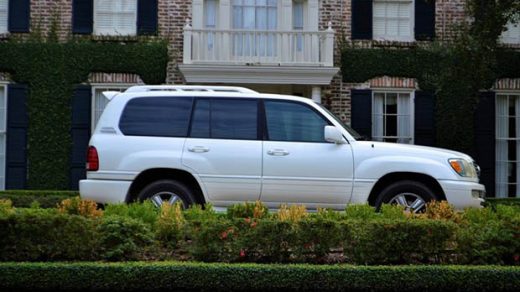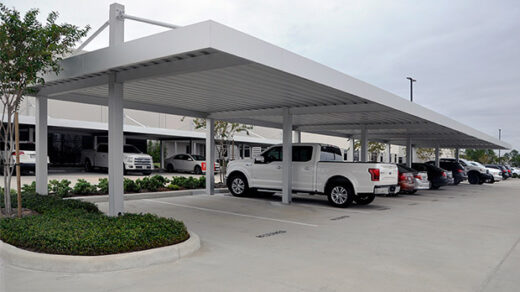Are you a new driver? Do you find parking a difficult task? Parking, whether parallel parking or parking in a parking space, is a near-impossible task for some people. Parking can be a daunting task, especially for beginners. Don’t worry, as this article covers various tips on how to park like a pro. All you need to do is follow the guide on how to park step by step.
Read More: Can You Park And Store A Car In A Storage Unit?
Table of Contents
Types of Parking:
Throughout the driving experience, you need to park your car in different places and in different locations. You may need to park your car in a garage, parking lot, near the road, or elsewhere. This means you have to adjust to the area where you need to park. All parking spaces are different and you need to show different types of parking skills to achieve your goals. Here are a few points about the different types of car parks.
- Angle parking
In this type of parking lot, cars are parked at an angle. In most cases, the car faces in one direction. It’s easy to park in an angled parking setup and move it out as long as everyone follows the rules. Since parking from an angle is easy to accelerate and zoom in, you need to be vigilant when accelerating. Give the right signals and keep an eye out for signals from other drivers.
- Perpendicular Lot
This type of parking lot is common in car parks where people park for longer periods of time. This type of parking is similar to corner parking, but here the angle is perpendicular to the curb ahead. The car will be parked at a 90-degree angle. You need to make sure that your car’s tires are pointing straight ahead and that the car is in the center of the allocated parking space in the vertical parking area.
- Parallel parking
Parallel parking of cars usually occurs on the road – cars are parked in parallel on the road. This type of parking requires some skill as it usually requires the driver to park between two vehicles, one in front and one behind. Getting in and out of a parallel parking lot requires paying attention to your surroundings and controlling your driving.
How To Park A Car In Different Lot
Angled Spot
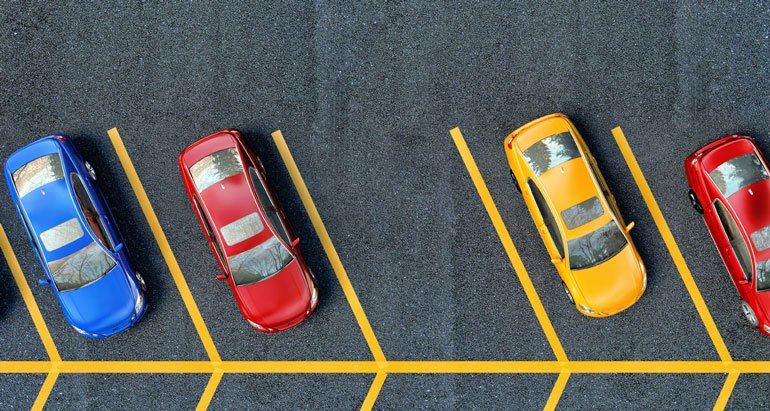
1. Find a parking space that is not too crowded
When practicing in the parking lot, it is more comfortable to practice in a parking lot rather than being surrounded by a lot of cars. Errors may occur.
Therefore, people who are learning to drive or who have not driven for a long time should park where there is no car before driving long distances. It’s also easier to learn how to back up in an empty parking lot.
2. Place the car
You must ensure that there is at least 5 or 6 feet of clearance between any other parked vehicles and yours.
Make sure to stay 5 or 6 feet away from other vehicles in the parking lot. This measure is helpful when parking, as the other steps are handy when cutting the wheel.
3. Sounds an alarm when a parking space is found
When you detect parking space, alert other drivers and let them know where you are parking. Drive forward until you can see the middle of the parking space you want to occupy.
Be careful when doing this and make sure you don’t take up other people’s space. As you drive forward, check for someone trying to back up from a position close to you.
4. Manipulate the wheels
Once you see the center of the parking space, turn the steering wheel. Doing this ensures that the car remains 5-6 feet away from any parked vehicles or other empty parking spaces. When turning the steering wheel, make sure they are clear of objects at that point. Enter the area and stop your car in a certain location in case you get a ticket.
5. Adjust the wheels
After parking, make sure the wheels are straight so that you can reverse.
Perpendicular Lot
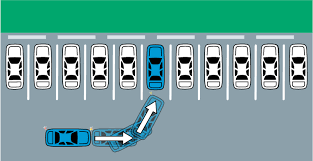
1. Correct positioning
Always approach vertical parking lots at a reasonable distance from other vehicles in the parking lot. Depending on the parking lot, the parking space can be on the right or left.
Make sure your car is at least 8 feet away from other vehicles on the driver or passenger side of the parking lot. When there are no cars nearby, make sure there is an 8-foot distance between your car and the parking space. When doing this, make sure not to occupy someone else’s parking space.
2. Make sure the signal is turned on
Turn on the signal lights to alert other drivers that you intend to park in a free position and watch out for pedestrians, cars, or any other obstacles. You must continue forward until your vehicle’s front bumper passes the taillights of another car near the parking space.
3. Control the steering wheel
When your front bumper cuts through the backlight of a car parked next to you, you’ll need to steer more than when you’re parked at an angle.
Drive forward and into space, but make sure there are no objects, debris, or shopping carts in the way. Continue moving until the rear of your car enters the space and the front faces the area.
To do this, adjust your side mirrors to line up with the mirrors in the car next to you. Make sure your front bumper is out of the space ahead and the back of your vehicle is not coming out of the parking space.
4. Adjust the wheels
Once your car is in a parking space, straighten the wheels. You can also do this when you leave your space before starting to reverse.
Parallel Lot
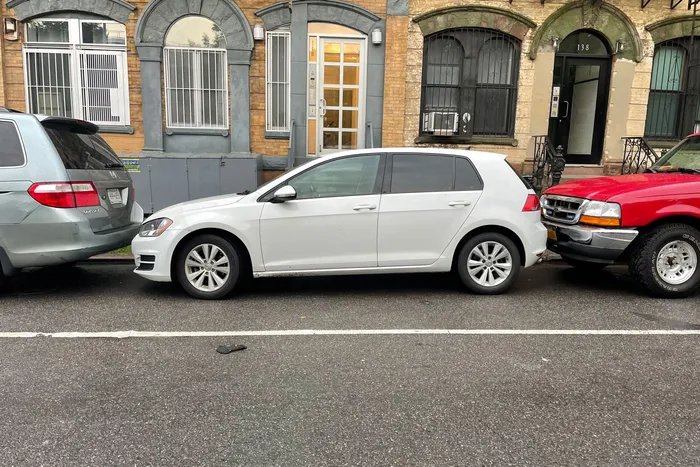
1. Find the right space
You need to find a preferred area where you can park without hitting vehicles in front or behind you.
Parking lots with parallel spaces, marked with white lines, are much easier than parking on the street. Pay attention to the most extreme areas of the parking lot as it is easier to navigate. You can park in this space, even when using a long car.
If you need to find space wide enough, you have to find one that is many feet longer than your car.
When you finally find your preferred location, make sure no vehicle is driving the same way using the mirrors. Remember to signal, slow down, and stop. If there is a rider behind you, you can tell them to bypass you while you hold your position.
2. Move carefully
To park between two vehicles, you must first ensure that there is a 2-foot distance between your vehicle and other vehicles in front of your parking space. Getting too close to the vehicle in front may result in scratching the other vehicle. Make sure your car bumper is in line with other vehicles, keeping at least 2 feet apart.
3. Use side mirrors
To do this, make sure to use the driver’s side mirror to free up space behind you. Look back and check the space. Move back until the bumper is about 3-4 feet away from the rear of your vehicle.
Release the brake, move the wheel to the right, and return to the space. Always check the front of the car and around to make sure other vehicles are not blocking your way.
Keep a distance of 2 to 3 feet from the vehicle in front of you. That way, you don’t have to scrap another car. You can use your rearview mirror to know the distance between your rear bumper and the car behind you. Shift gears and drive forward a few feet so you don’t hit the curb.
4. Turn the steering wheel to the left
You can do this once the front wheels are close to the rear bumper, then back up. Don’t forget to check the sides to make sure there are no cars ahead. Use your side mirrors and rearview mirrors to know the distance between your vehicle and the vehicles behind you.
5. Drive-in
Use the steering wheel to steer the vehicle to the right. Head towards the corner and aim your car in the area.
When you are within 30 cm of the curve, stop and release the key. Mastering this type of parking is a regular practice.
Don’t run in awkward parking spots. Instead, try to park and learn from each experience. In this way, you will learn how to park between two vehicles.
How to Find Good Parking Space?
This is a major problem in crowded cities – no space for parking! Even in the parking lot or in the basement of the mall, there is no unnecessary crowding on weekends. Here are some tips to help you find a good parking spot.
- Always be aware of no parking areas.
- Park the vehicle in a well-lit area.
- Avoid parking in the area directly opposite the exit of the shopping center, as carts can damage your car.
- Wait near a row, rather than wandering around in your car, find an open spot in the parking lot.
- Keep an eye out for those with keys – they may be walking towards their car to leave you a spot.
- Be patient and respectful of the parking service staff and ask for assistance if necessary.
- Do not park in shady places.
- Avoid parking near trash cans and grass.
Final Words
Don’t worry about parking your car, even if you’re a novice. All it takes is constant practice and the right guidance. Follow our guide step by step to park your car and become a pro today.
Read Next: Angle Parking & Perpendicular Parking

